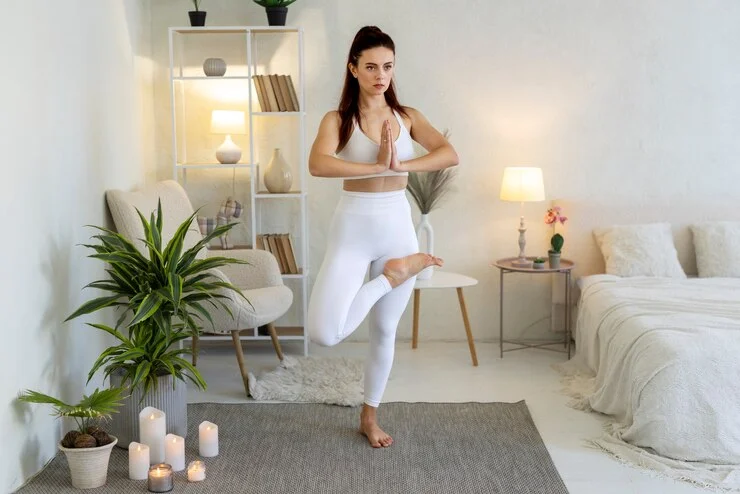How to Practice Kriya Yoga at Home
Introduction
Kriya Yoga, an ancient practice with roots stretching back through centuries, stands out as a transformative journey within the vast realm of yoga. Unlike more familiar styles, Kriya Yoga goes beyond physical postures, diving deep into the mental and spiritual realms. It’s a technique that emphasizes the direct, practical experience of self-realization through meditation, breath control, and the cultivation of a specific set of spiritual exercises. Practicing Kriya Yoga at home allows individuals to cultivate inner peace, heightened awareness, and a deeper connection to the universal life force, making it an invaluable practice for yoga trainers, enthusiasts, and anyone looking to enhance their health and spiritual well-being.
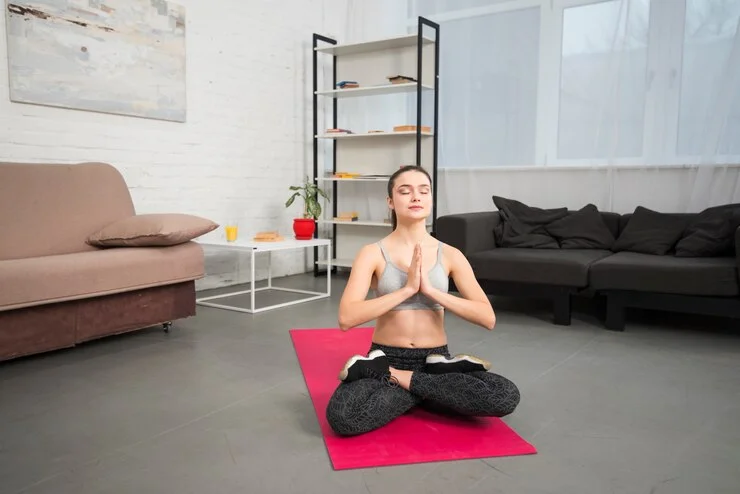
What is Kriya Yoga?
Kriya Yoga is more than just a practice; it’s a pathway to profound spiritual growth and enlightenment. Originating from the teachings of the great yogi, Mahavatar Babaji, and popularized in the West by Paramahansa Yogananda, Kriya Yoga’s roots are deeply embedded in the ancient yogic traditions of India. The word “Kriya” stems from the Sanskrit term for “action” or “movement,” referring specifically to the practice’s focus on purifying the body and mind through precise techniques.
This yoga form distinguishes itself from others by its emphasis on the direct, internal experience of spirituality, rather than the external, physical postures seen in practices like Hatha Yoga. The core of Kriya Yoga lies in its techniques, which are designed to accelerate spiritual development and help practitioners achieve a state of self-realization. These techniques include a series of purifying breaths, meditation practices, and the use of mantras to harness the body’s latent energy, guiding it towards the higher energy centers (chakras) of the body.
The goals of Kriya Yoga are multifaceted, aiming not only for physical health and mental clarity but also for the awakening of the practitioner’s spiritual potential. By fostering a deep connection between the practitioner’s consciousness and the infinite, Kriya Yoga opens the door to profound peace, joy, and an enduring sense of fulfillment.
In the following sections, we will delve into the practical aspects of Kriya Yoga, including how to create a conducive environment for practice, essential techniques for beginners, and ways to deepen the practice for more advanced practitioners.
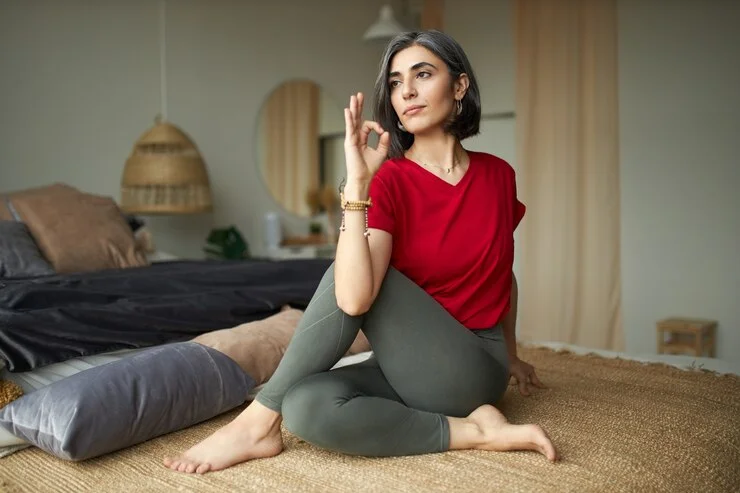
Preparatory Steps for Kriya Yoga at Home
Practicing Kriya Yoga at home requires creating an environment that supports meditation and spiritual practice. Here are some steps to prepare:
Creating a Conducive Environment
- Dedicated Space: Choose a quiet, clean, and comfortable area in your home where you can practice undisturbed. This space should be reserved for your yoga and meditation practices, helping to create a sacred atmosphere.
- Minimalist Setup: Keep the space simple and clutter-free. A cushion or yoga mat, a small table or shelf for any symbolic items you might want to include, and perhaps a light blanket are all you need.
- Ambiance: It’s important to have good lighting and ventilation in your practice area. Natural light and fresh air can help create a calming atmosphere. You may also want to consider adding elements like incense or a diffuser with essential oils to enhance relaxation.
Essential Tools and Resources
- Kriya Yoga Texts: Having access to authoritative texts and teachings on Kriya Yoga can guide your practice. Books by Paramahansa Yogananda, such as “Autobiography of a Yogi,” offer valuable insights.
- Guided Sessions: Initially, guided audio or video sessions can be helpful. Look for resources from reputable yoga institutions or certified Kriya Yoga instructors.
Mental and Physical Preparation
- Routine: Establish a regular practice time, ideally during the quiet hours of early morning or late evening. Consistency is key.
- Diet and Lifestyle: A balanced, vegetarian diet is often recommended to complement your practice. Also, ensure you’re well-rested to maintain focus during meditation.
- Warm-Up: Begin with gentle stretching or Hatha Yoga poses to prepare your body for sitting in meditation for extended periods.
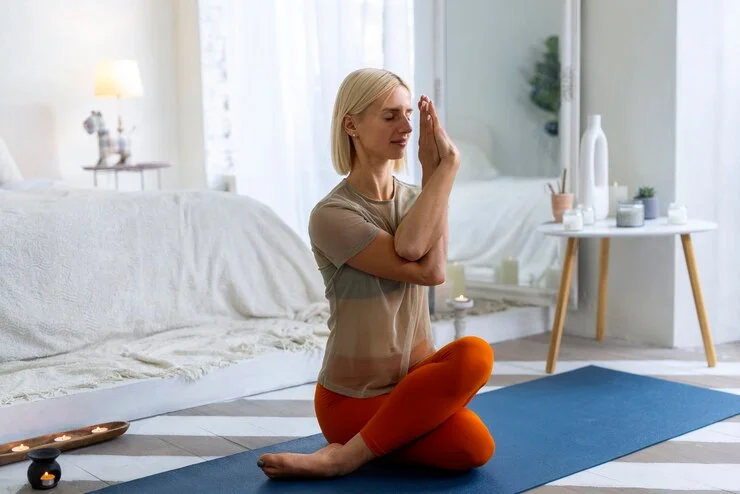
Basic Kriya Yoga Techniques
For those new to Kriya Yoga, starting with basic techniques is crucial. These foundational practices will help you develop control over your breath, focus your mind, and prepare for more advanced techniques.
Breath Control (Pranayama)
- Ujjayi Pranayama (Victorious Breath): This technique involves taking deep breaths in through the nose while slightly constricting the throat. This method helps to calm the mind and prepare it for meditation.
- Anulom Vilom (Alternate Nostril Breathing): This practice balances the left and right hemispheres of the brain, enhancing mental clarity and focus.
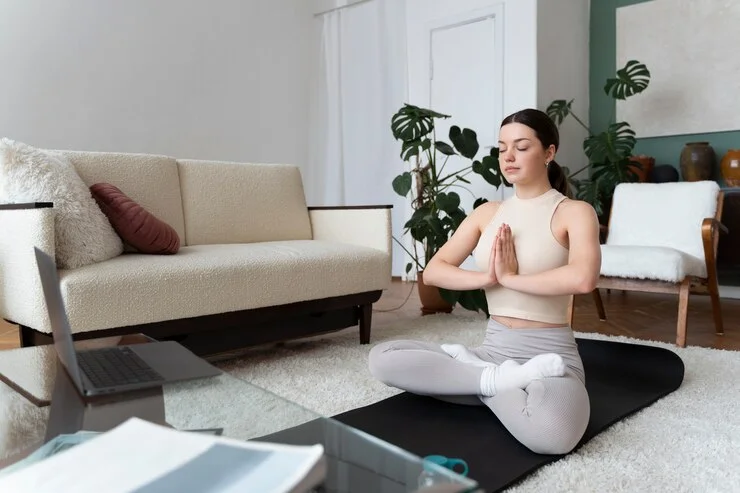
Meditation Techniques
- Hong-Sau Technique: A foundational technique taught in Kriya Yoga, focusing on the breath and the silent repetition of the mantra “Hong” (inhale) and “Sau” (exhale), meaning “I am Spirit.” This technique helps to withdraw the senses from external distractions and deepen concentration.
- Mantra Chanting: Using mantras such as “Om” or other sacred syllables can help focus and calm the mind, creating a vibrational energy conducive to meditation.
Visualization and Mantra Chanting
- Chakra Visualization: Enhance awareness of subtle energy by visualizing energy flow through the body’s seven chakras, from the base of the spine to the crown of the head.
- Mantra Repetition: Choosing a mantra that resonates with you can help maintain focus and deepen your meditation practice.
Tips for Beginners
- Start Slow: Begin with short sessions, gradually increasing the duration as you become more comfortable.
- Be Patient: Progress in meditation and breathwork takes time. Approach your practice with patience and openness.
- Seek Guidance: Consider seeking guidance from a qualified Kriya Yoga teacher to refine your technique and deepen your understanding, even if many resources are available.
The journey into Kriya Yoga is deeply personal and transformative. As you start to incorporate these habits into your daily life, you’ll likely notice profound changes in your mental, physical, and spiritual well-being. In the next sections, we’ll explore advanced Kriya Yoga practices and delve into the specifics of Kriya Yoga meditation, providing further guidance for those ready to deepen their journey.

Advanced Kriya Yoga Practices
As practitioners become more comfortable with the basic techniques of Kriya Yoga, they may feel called to explore more advanced practices. These techniques, while more complex, offer deeper insights into the self and a more profound spiritual connection.
Deepening Meditation and Breath Work
- Kriya Pranayama: This advanced breathing technique involves a specific pattern of inhalation and exhalation, focusing on the movement of energy along the spine. Practitioners visualize the ascent and descent of pranic energy through the chakras, purifying the astral body and awakening spiritual consciousness.
- Yoni Mudra: An advanced meditation technique that involves sealing the senses to withdraw inward fully. This practice supports deeper states of meditation and is often taught after mastering initial techniques.
Incorporating Bandhas and Mudras
- Maha Mudra: This powerful technique combines a physical posture, breath control, and concentration on the spinal energy. It aims to unlock the spiritual energy within and direct it upwards through the chakras.
- Bandhas (Energy Locks): Practices like Jalandhara Bandha (Chin Lock), Mula Bandha (Root Lock), and Uddiyana Bandha (Abdominal Lock) are integrated with breath work to control and guide energy flow, facilitating deeper meditation and energy awakening.
Guidelines for Advanced Practitioners
- Regular Practice: Dedication to daily practice is crucial. Advanced techniques require consistency and commitment to unfold their full potential.
- Spiritual Diary: Keeping a journal of your experiences, challenges, and insights can be incredibly valuable. It helps track progress and reflect on the spiritual journey.
- Seeking Further Guidance: As practices become more advanced, the guidance of an experienced Kriya Yoga teacher becomes increasingly important. They can provide personalized instructions and support to navigate the deeper aspects of the practice.

Kriya Yoga Meditation
At the heart of Kriya Yoga lies its meditation practices, designed to lead practitioners to higher states of consciousness and ultimate self-realization. Understanding and integrating Kriya Yoga meditation into your daily practice is essential for those seeking to experience its profound benefits.
Steps to Enter Kriya Yoga Meditation
- Prepare Your Space: Ensure your meditation area is clean, quiet, and free from distractions.
- Begin With Pranayama: Begin your meditation practice with breathing exercises to calm and prepare your mind.
- Use a Mantra: Employ a mantra to focus the mind. The Hong-Sau technique is a powerful tool for beginners and advanced practitioners alike.
- Visualize the Energy Flow: Focus on the flow of energy through the spine and chakras, using visualization techniques to enhance concentration and spiritual awareness.
- Deepen Your Practice: Gradually extend the duration of your meditation, remaining attentive to the experience of inner stillness and expansion.

Benefits for Mind and Body
Kriya Yoga meditation offers extensive benefits, including
- Reduced Stress and Anxiety: Regular practice promotes relaxation and mental clarity, reducing symptoms of stress and anxiety.
- Enhanced Focus and Concentration: Techniques like breath control and mantra chanting improve cognitive functions, leading to better focus and concentration.
- Spiritual Growth: Kriya Yoga meditation fosters a deep sense of connection with the self and the universe, encouraging spiritual growth and self-realization.
Integrating Meditation into Daily Practice
To reap the maximum benefits, incorporate Kriya Yoga meditation into your daily routine:
- Set a Specific Time: Dedicate a specific time each day for meditation, ideally in the morning or evening.
- Gradual Progression: Gradually increase the duration and intensity of your practice to allow your body and mind to adjust.
- Reflect and Adjust: Regularly reflect on your practice and make necessary adjustments. Listening to your body and intuition is key.
Conclusion
Kriya Yoga is a profound and transformative practice that offers deep insights into the self and the universe. By starting with basic techniques and gradually moving to more advanced practices, practitioners can experience significant benefits for their mind, body, and spirit. Regular practice, guidance from experienced teachers, and a commitment to the spiritual journey are essential. Whether you are a beginner or an advanced practitioner, Kriya Yoga offers a pathway to greater peace, clarity, and spiritual awakening. Embrace the journey with an open heart and mind, and discover the infinite potential that lies within you.
FAQs
1. What is Kriya Yoga and how does it differ from other forms of yoga?
Kriya Yoga is a spiritual practice that emphasizes rapid spiritual development through a combination of specific meditation techniques, breath control, and ethical disciplines. Unlike other forms of yoga that may focus more on physical postures (asanas) or scriptural study, Kriya Yoga is primarily concerned with awakening spiritual consciousness and achieving self-realization. It utilizes energy control techniques to direct life force (prana) through the chakras (energy centers) in the spine, facilitating a deep inner transformation.
2. How can beginners start practicing Kriya Yoga at home?
Beginners interested in Kriya Yoga should start by creating a conducive environment for practice, which includes finding a quiet space and establishing a regular routine. Initially, focusing on basic breath control exercises (pranayama) and simple meditation techniques, such as the Hong-Sau technique, will lay a solid foundation. Beginners are also encouraged to seek guidance from qualified teachers or reputable sources to learn the correct methods and deepen their understanding.
3. What are the key benefits of Kriya Yoga meditation?
Kriya Yoga meditation offers numerous benefits, including enhanced mental clarity, reduced stress and anxiety, improved concentration, and increased emotional resilience. On a spiritual level, it accelerates the practitioner’s journey towards self-realization and enlightenment by fostering a deep connection with one’s inner self and the universal consciousness. It also promotes a sense of peace, balance, and well-being in daily life.
4. Can Kriya Yoga be practiced without a guru or teacher?
While it is possible to begin learning about Kriya Yoga and practicing some of its preliminary techniques independently, seeking guidance from a qualified guru or teacher is highly recommended, especially for learning advanced techniques. A guru can provide personalized instruction, ensure correct practice, and offer spiritual support and guidance, which are invaluable for deepening the practice and advancing on the spiritual path.
5. How can I integrate Kriya Yoga into my daily routine for maximum benefits?
To integrate Kriya Yoga into your daily routine effectively, establish a consistent practice time, preferably in the quiet hours of the morning or evening. Start with a duration that feels manageable and gradually increase as you become more comfortable. Incorporate a variety of techniques, including pranayama, meditation, and ethical practices, to ensure a holistic approach. Keeping a practice journal can also help monitor progress and reflect on experiences. Finally, remain patient and open to the process, allowing your practice to evolve naturally over time.

